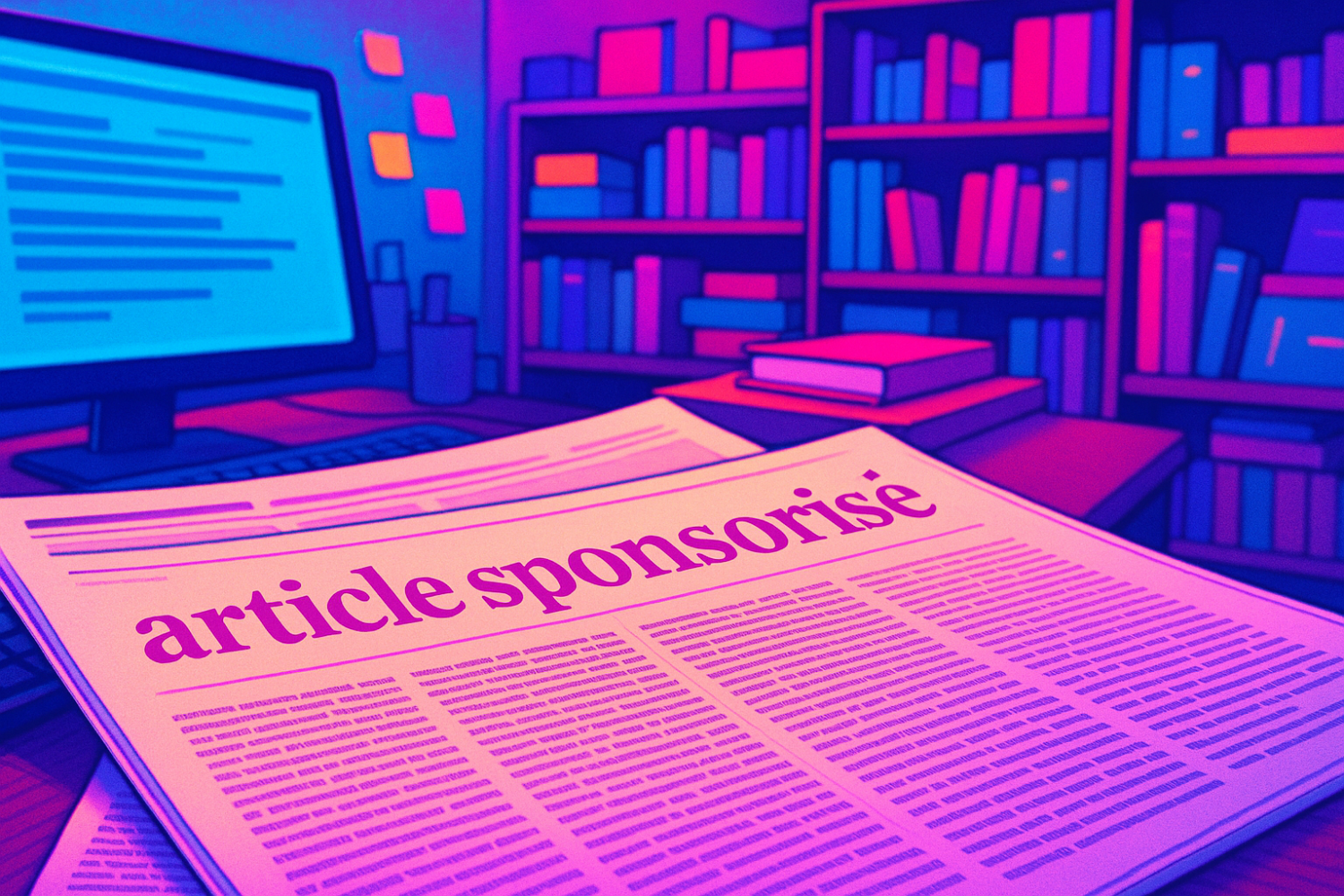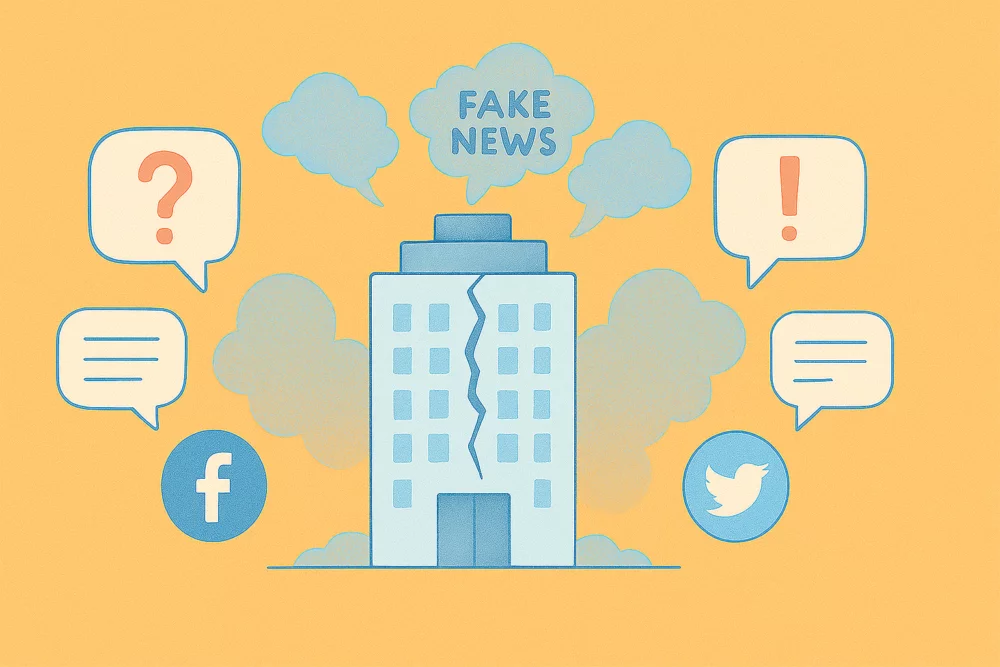They look exactly like journalistic articles. Yet, they are advertisements. According to Loris Guémart, journalist for Arrêt sur images, the practice of sponsored articles has spread: “There are very few newspapers that do not engage in this or in advertorial partnerships.” The only exceptions, according to him, are independent press such as Mediapart or public service media. The practice is far from trivial. In 2016, a study conducted by Stanford University concluded that more than 80% of young Americans could not distinguish an advertising article from a truly journalistic one on online press. At a time when 62% of French people surveyed say they distrust what the media say about major current affairs (Verian Barometer 2025), does the confusion between information and advertising further erode public trust in the media?
Economic dependence
The formats of these contents vary. “It can range from thematic pages where journalists talk about a subject chosen by a company with which their media has a contract, to articles entirely written by the advertiser, published in a layout almost identical to that of the media,” details Loris Guémart. He cites numerous partnerships of Le Monde and Le Figaro, where journalists write positive articles about cultural events, sometimes accompanied by the mention “this article is part of a dossier produced as part of a partnership.”
These advertising contents also exist in video form. In the case of pure players like Explore Media, they even constitute the backbone of their economic model. “Our audience is exclusively on social networks. Therefore, our only resources come from sponsored videos and from sharing advertising revenue paid to us by YouTube and Snapchat,” explains Maximilien Devay, communication and strategic planning director of the edutainment-specialized media.
For its videos, designed to be educational and entertaining, Explore Media nevertheless claims editorial rigor: “When a brand like Livi approaches us, we start from a journalistic angle on women’s intimate health. We rely on reliable sources, such as a general practitioner, to provide real information. The tone, structure, and form use journalistic codes to respect our editorial line.”
Ethics put to the test
But how can one clearly distinguish information from advertising? There is a law, reminds Pierre Ganz, secretary and member of the Journalistic Ethics and Mediation Council (CDJM): “Article 10 of the law of August 1, 1986, provides that any advertising with editorial character must be preceded by the mention ‘advertisement’ or ‘press release.’” This rule aims to protect consumers. On the ethical level, the global journalists’ charter is explicit: a journalist “must not create confusion between journalistic and advertising activity. He must not lend his pen to promote a product for which he is paid,” insists the CDJM secretary.
Yet abuses exist. In 2019, journalists from "L’œil du 20h" on France 2 discovered that media including Le Parisien and Le Figaro published flattering articles on Franco-Chinese political relations, fueled by fake interviews. These contents were actually written by Xinhua, the official Chinese agency. Readers might have believed these were journalistic articles. But no: it was the Chinese state behind them, Loris Guémart protests. And how could anyone know? That’s the problem. “If we have to scrutinize the font, then we have already lost.”
In 2023, an investigation by Radio France, coordinated by Forbidden Stories, revealed that the platform Getfluence “allowed advertisers to pay to publish sponsored articles on more than 3,000 news sites without explicit mention,” explains Maxime Tellier, journalist in Radio France’s investigative unit and author of the investigation. Titles such as The Guardian in the UK, Elle magazine, or Valeurs Actuelles were among the media involved.
The price of confusion
Do these practices feed citizens’ distrust of the media? For Loris Guémart, it is obvious: “Many readers or viewers cannot tell the difference between a journalistic article and advertising content, especially when the latter copies all the codes.” According to him, this ambiguity “weakens the credibility of the press.” Pierre Ganz shares this view: “It is not so much the sponsorship itself that is problematic, but the risks it poses to editorial independence. If a journalist signs content to promote a product, how can readers still take them seriously?” “I don’t know if sponsored content has a direct impact on trust in the media,” nuances Maxime Tellier, “but this type of content clearly plays on ambiguity by copying all the codes of a journalistic article. The promotional nature of the content must be very clear to the reader. Transparency remains the best guarantee.”
Different realities
The relationship to these contents varies according to editorial lines. “Explore Media is not a news outlet like Le Parisien or Libération. We offer educational, simplified content accessible to everyone,” notes its communication director Maximilien Devay. This editorial line allows, according to him, to freely assume partnerships with brands, provided transparency is maintained again. He acknowledges, however, that poorly identified sponsored content can “indeed tarnish the image of the media concerned and, by extension, that of the journalistic ecosystem.”
That is why Pierre Ganz advocates for clearer vocabulary: “The mentions ‘sponsored’ or ‘press release’ mean nothing to many readers. The word ‘advertisement’ should be clearly written. That would be more honest.” For his part, Loris Guémart calls for vigilance: “I advise everyone to hunt for every kind of clue, whether logos, purchase links in the text, or even the typography used.”
Between economic imperative and duty to inform, media are navigating uncertain waters. To date, no French study has established a direct link between sponsored content and citizens’ distrust of the media. But for the professionals interviewed, the risk is there, along with the fear that betrayed trust will not be regained with a click.







